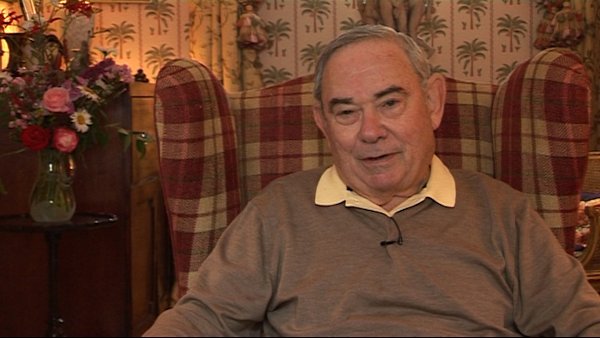NEXT STORY

Joining the microbiology graduate team at the University of Pennsylvania
RELATED STORIES

NEXT STORY

Joining the microbiology graduate team at the University of Pennsylvania
RELATED STORIES


|
Views | Duration | |
|---|---|---|---|
| 11. Life in the army | 103 | 04:14 | |
| 12. First encounter with microbiology | 100 | 04:19 | |
| 13. Early days at Merck | 98 | 03:40 | |
| 14. Going back to university | 92 | 02:39 | |
| 15. Joining the microbiology graduate team at the University of... | 88 | 03:13 | |
| 16. A laboratory in need of modernization | 80 | 01:56 | |
| 17. Our $75 laboratory | 80 | 03:10 | |
| 18. Learning about cell culture | 98 | 01:31 | |
| 19. The transition from cells to bacteria | 80 | 00:46 | |
| 20. The Wistar Institute | 135 | 01:24 |


After about a year at Merck, during which time I should say I met my wife, I had contact with a good friend, as I say, still at Penn [University of Pennsylvania] and pursuing a Master's Degree in the medical microbiology department, which was in the Medical School, unlike the College of Liberal Arts and Sciences where the microbiology training that I had took place. And he kept me apprised as we met from time to time, of what he was working on. He happened to be working on what was then called pleuropneumonia-like organisms. Today the name is 'mycoplasma'. These organisms are the smallest free living organisms, that is, they're so small yet they have the ability to grow on a dead source of nutrients. That distinguishes them from viruses, which are a bit smaller than these mycoplasmas, but can only replicate on a living cell or in a living cell.
And as time grew... passed I became more and more interested, not only in these organisms, but also in the idea of going back to Penn and trying to get a higher degree. I realised by this time that that might be doable. I went in to see my... to see Wasserman and Verwey, they encouraged me, which was a big plus. Of course I was living at home still with my parents and so my financial obligations were very low and my income at that time was... was great for a single fellow living at home and paying very little for his upkeep, and so I had accumulated modest savings. And I think I accumulated sufficient savings to go to Penn for one year. So that did indeed happen. I made application for Graduate School and in particular, to be accepted by a professor in that department who was the leading authority on these microorganisms.
Leonard Hayflick (b. 1928), the recipient of several research prizes and awards, including the 1991 Sandoz Prize for Gerontological Research, is known for his research in cell biology, virus vaccine development, and mycoplasmology. He also has studied the ageing process for more than thirty years. Hayflick is known for discovering that human cells divide for a limited number of times in vitro (refuting the contention by Alexis Carrel that normal body cells are immortal), which is known as the Hayflick limit, as well as developing the first normal human diploid cell strains for studies on human ageing and for research use throughout the world. He also made the first oral polio vaccine produced in a continuously propogated cell strain - work which contributed to significant virus vaccine development.
Title: Going back to university
Listeners: Christopher Sykes
Christopher Sykes is a London-based television producer and director who has made a number of documentary films for BBC TV, Channel 4 and PBS.
Tags: Merck, University of Pennsylvania, Aaron E Wassermann, Willard Verwey
Duration: 2 minutes, 39 seconds
Date story recorded: July 2011
Date story went live: 08 August 2012